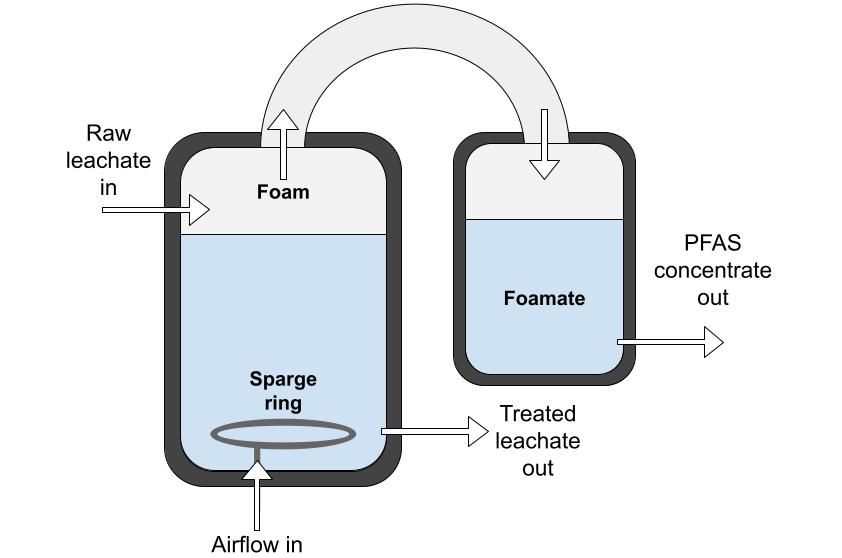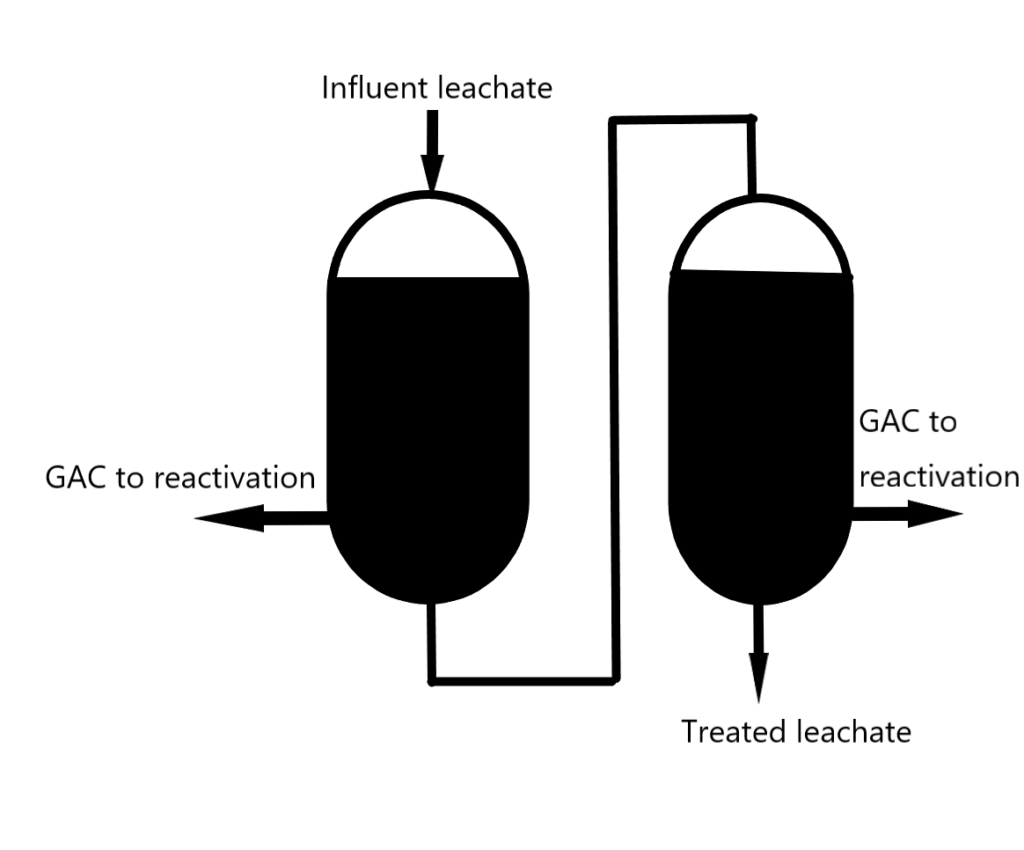Conclusions
The results from ALS Laboratory prove the effectiveness of both methods in removing many types of PFAS. Depending on the concentration limits decided by the EPA in the upcoming year, these treatments may be required to remove the bulk of PFAS before more intensive treatment to the ppt range. Either process could potentially be implemented at the landfill. The diagram below shows a suggested process layout for the scaled-up foam and GAC method.
The foam method could be readily adapted, only requiring implementation of tanks and a sparge ring to create the foam. Activated carbon is more costly, but offers deeper treatment of the leachate than foam, removing other contaminants in addition to PFAS. We recommend either treatment to the landfill, although further research may be necessary to determine which is best for their specific requirements.
Pitfalls and Lessons Learned
The reactivity of PFOA posed a few problems to the lab team. It dissolved the air stone and reacted with the carbon tape used for observation in the SEM.
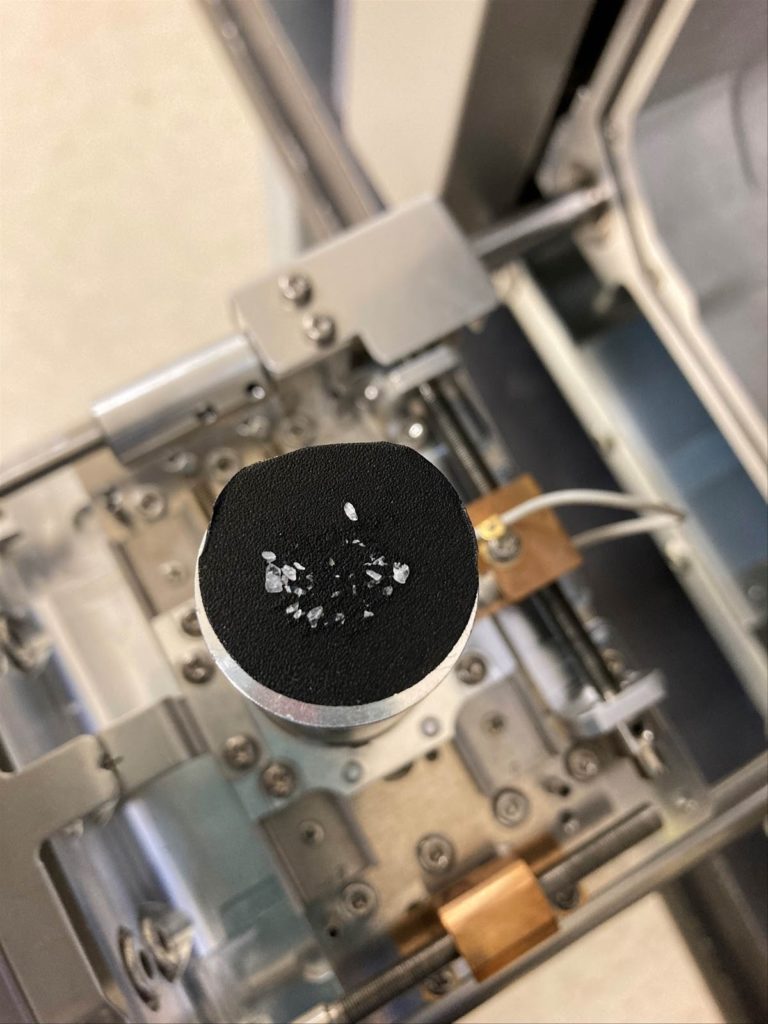
PFOA on carbon tape in the SEM. 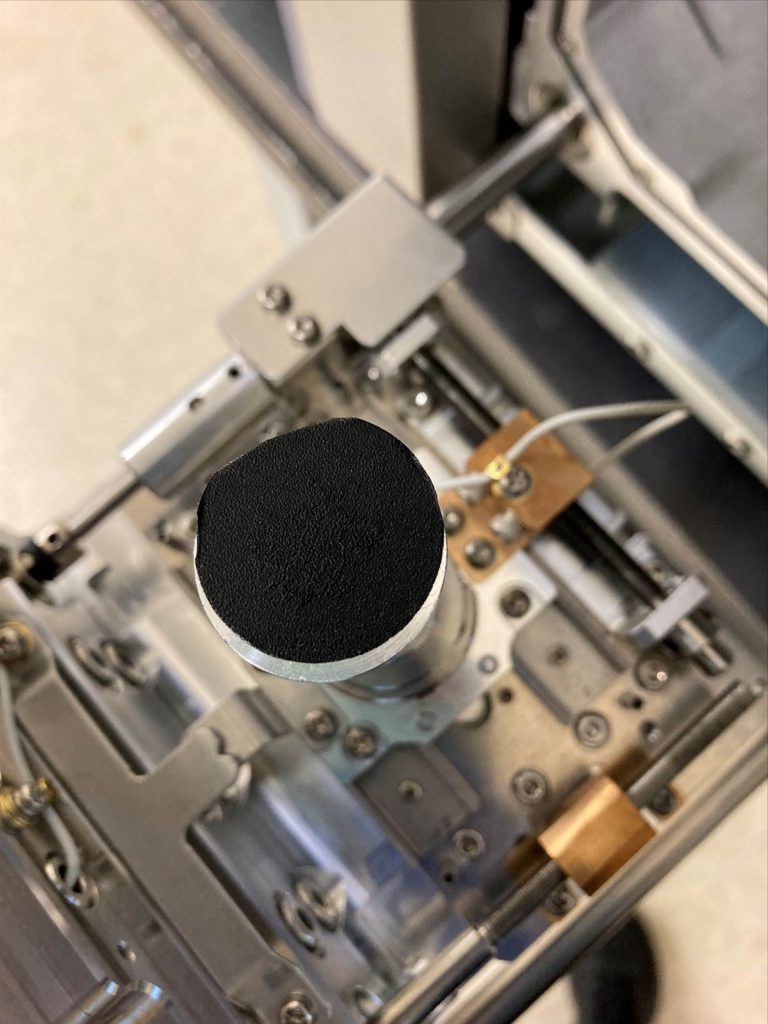
PFOA reacting and disappearing while in SEM. 
Stuck carbon. 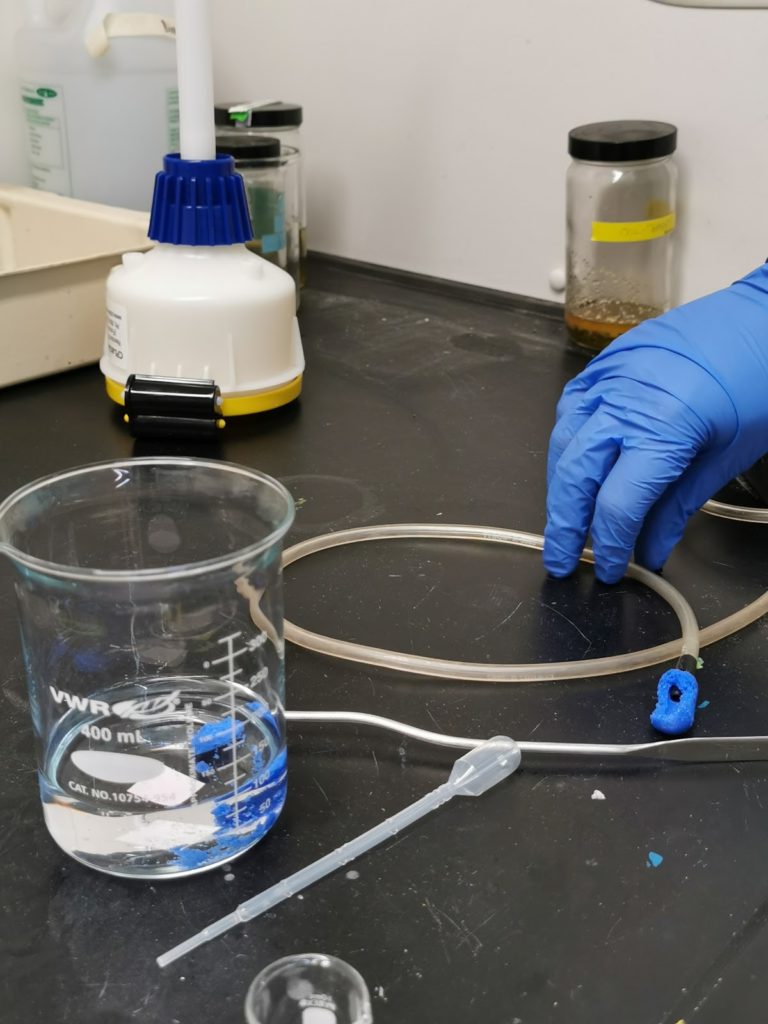
PFOA dissolving our airstone.
The carbon was also very tricky to remove from the column, especially if had been treated recently and still retained moisture. In the images above, a team member tries to remove carbon with chopsticks, a difficult feat.
Future Work
Scale Up
We considered it outside our project scope to propose a physical system for implementation at the landfill, but it could be done by applying the methods we studied here to data from the landfill. Considering the variations in flowrate, composition and other factors, this will be a complex problem.
Solid/Liquid Comparison
A question that came up throughout this project was how PFAS partitions itself between the solid and liquid phases of leachate. We were not able to analyze this as part of our project scope, but it would be useful to characterize. The treatment methods here focused mainly on the liquid phase. If the solids contain a high concentration of PFAS, it may be necessary to treat them separately.
Acknowledgements
We would like to thank the following for their help throughout the semester:
- Advisers: Mark Juba, Rachel Monfredo
- Project Sponsors: David Cross, Nicole Simonetti
- Sampling: Brian J. McGrath
- TA John Lovito
- Professor Melodie Lawton
- Clair Cunningham
- Calgon Carbon
- ALS laboratories
References
- Achaw, Osei-Wusu. “Scanning Electron Microscopy -A study of the Porosity of Activated Carbons Using the Scanning Electron Microscope”.2012. DOI:10.5772/36337
- Calgon Carbon, “”RSSCT Summary Report: Removal of Short Chain PFAS Compounds via GAC (n.d:.) Retrieved 29 April 2021 from: https://www.calgoncarbon.com/pfas-industrial-remediation/
- US EPA, OA. “Basic Information on PFAS.” US EPA, 30 Mar. 2016, https://www.epa.gov/pfas/basic-information-pfas.
- Robey, Nicole M., et al. “Concentrating Per- And Polyfluoroalkyl Substances (PFAS) in Municipal Solid Waste Landfill Leachate Using Foam Separation.” Environmental Science and Technology, vol. 54, no. 19, American Chemical Society, 2020, pp. 12550–59. Engineering Village, doi:10.1021/acs.est.0c01266.
- Potential Health Effects of PFAS Chemicals | ATSDR. 24 June 2020, https://www.atsdr.cdc.gov/pfas/health-effects/index.html.

